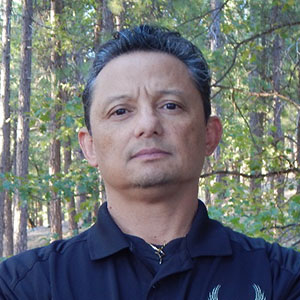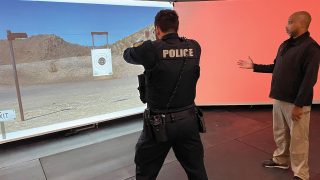My last couple of training articles focused on a trigger technique (“Reset in recoil”) and a grip technique (“Call your shots: Using a ‘true’ thumbs-forward grip”). Now, we are going to continue moving rearward from the weapon and add upper body techniques to our shooting platform. All these techniques (trigger, grip, upper body) are designed to work together in unison to create a solid platform that will tremendously increase shooting stability, especially under stress-fire conditions.
The first thing we are going to do is locate the natural “pivot point” present on all semi-auto handguns. This area is not necessarily designed as a pivot point; it just happens to become one due to the upward movement of the weapon as it meets resistance from the shooter’s hands upon discharge. In normal range terminology, this movement is called “muzzle flip” or “muzzle rise.” As you mentally picture muzzle rise, it should start to become obvious where that natural pivot point is located.
You guessed it … it is at the “tang” or top end of the grip, just below the rear of the slide. This is where you place the web of your hand when gripping the weapon. If the web of your hand is placed at the highest point (removing any gap or space), you have what is called a “high tang grip” (Figure 1). Having a high tang grip helps to minimize muzzle flip by meeting the rearward movement of the weapon at the highest possible point so that the weapon’s inertia can continue straight to the rear, versus “pivoting” the gun upward. This means that the less space between the web of your hand and the highest point of the tang, the less chance for pivot. So now that we have our high tang grip in place, let us finish off with a proper two-handed true thumbs-forward grip and extend our arms to just about full extension (leaving a slight bend at the elbows).
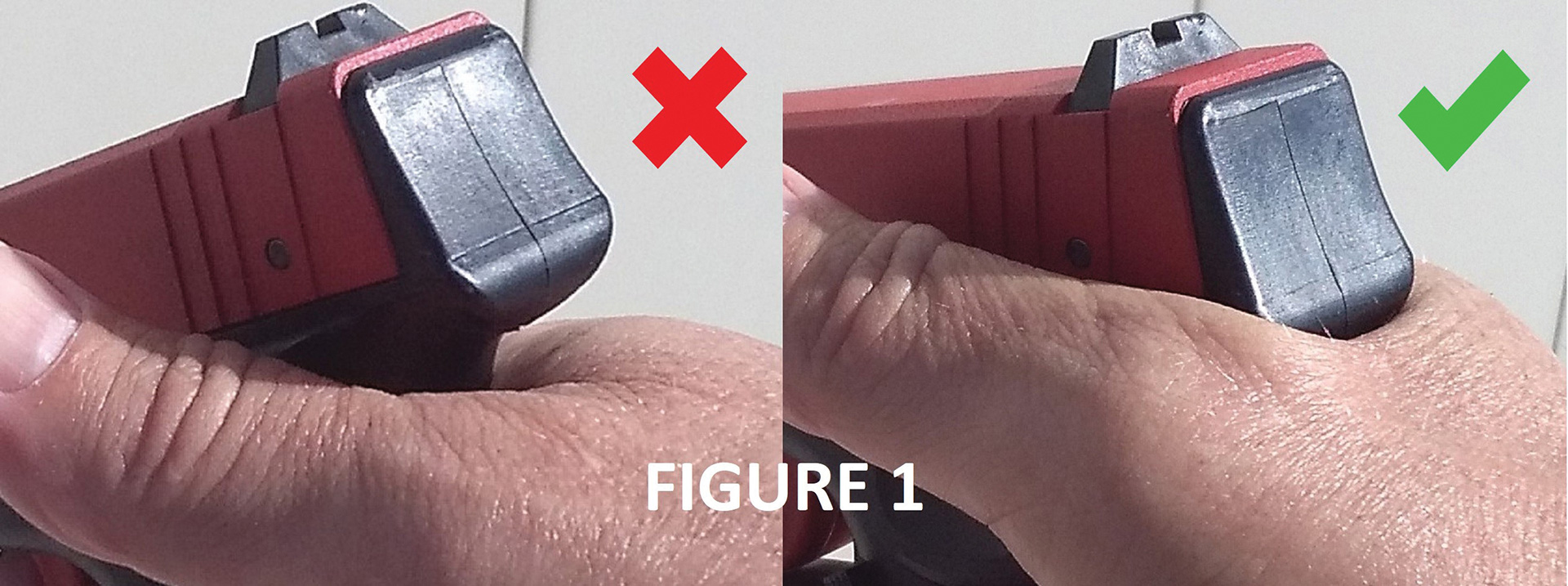
From here, we move to the wrists. Our wrists are designed to fold and crease in all directions. However, if we allow our wrists to fold and crease while firing, we unwittingly allow more uncontrolled movement of the weapon as it surges rearward into our hands. This also increases muzzle flip (and side-to-side movement). But by locking out our wrists, we minimize that movement, which allows us to better stabilize the weapon on its original horizontal plane. This will decrease muzzle flip and automatically result in more accurate follow-up shots (Figure 2).
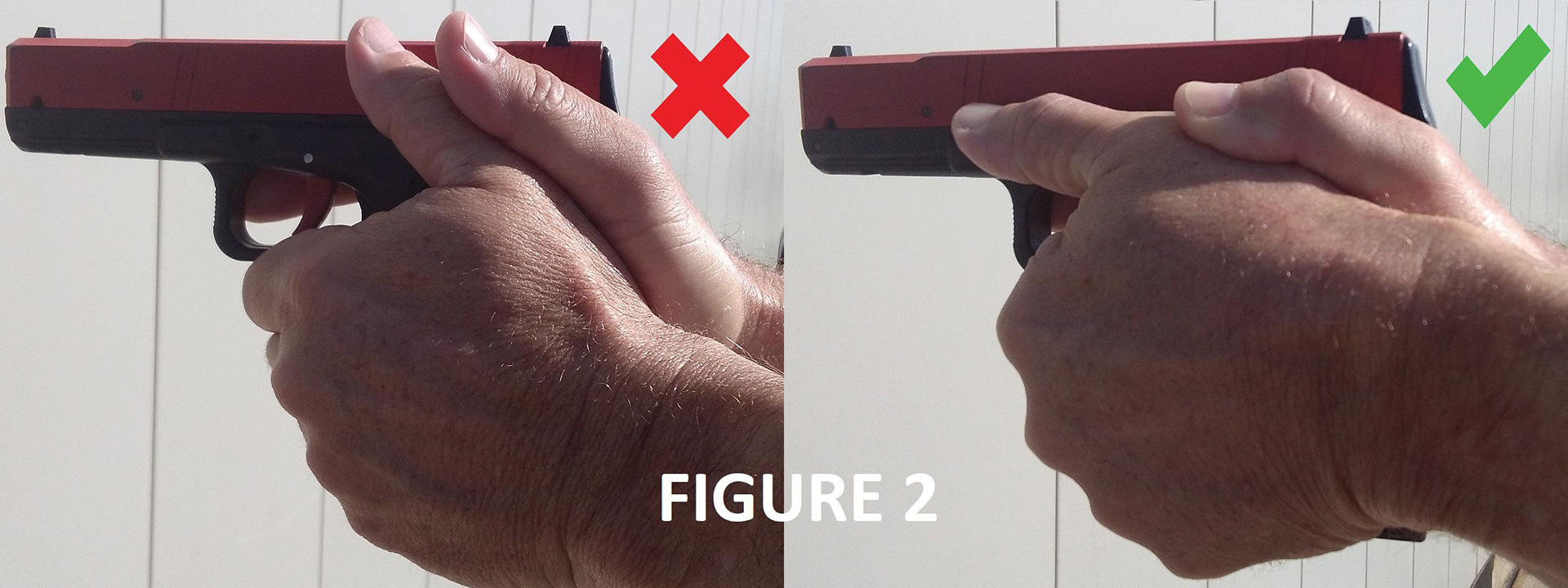
Now, let us look at a couple of other things that inherently occur when you have a proper true thumbs-forward grip at full extension with your wrists locked out. The first is arm height. Do you notice the difference in height between your support-side and strong-side arms? It should be noticeable that your support-side arm is higher than your strong-side arm. This is by design. Remember in my last article where I had you increase pressure on your support side to help you keep balanced resistance on the weapon while firing? This is more of the same. But instead of just adding support-side thumb pressure to the frame of your weapon, now you can maximize the pressure by adding arm leverage, if needed. This is a game changer when firing at longer pistol distances (outside of seven yards) under stress (Figure 3).
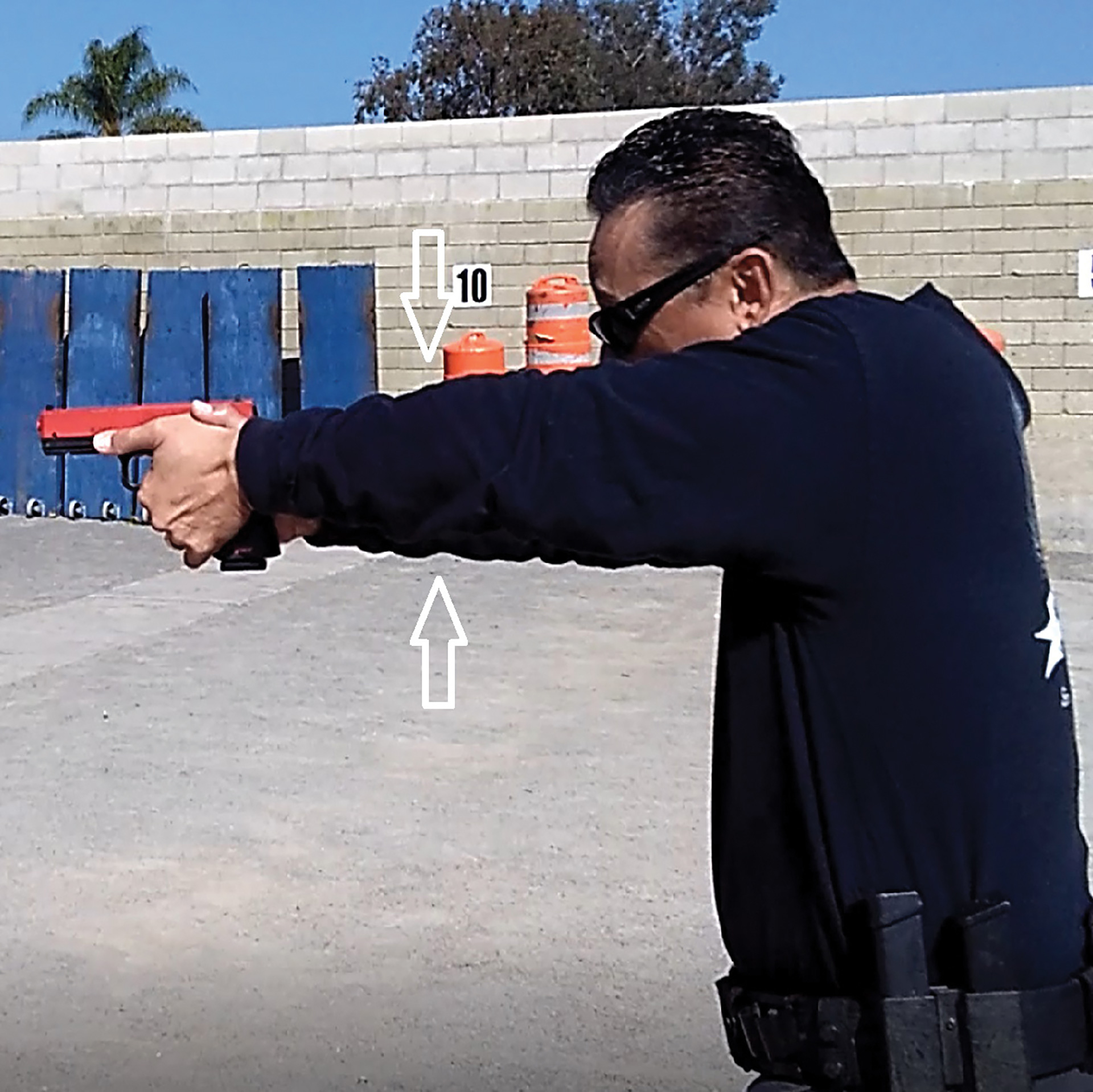
Now we are going to move on to the elbows. Elbows are fulcrums that allow the lower portion of our arms to move as a lever. Which way the end of your elbow is pointing determines the direction of lever movement. For example, in relation to your body, if your elbow is pointed toward the ground, the lever moves up and down. But, if your elbow is pointed outward (toward the left or right), the lever moves front to back. So, by consciously positioning your elbows slightly outward at full extension, we control the fulcrum and again minimize muzzle flip while firing. This occurs because the kinetic energy is now moving straight to the rear toward the core of the body. If our elbows are pointed down while firing, the inertia will send the lever up and cause the muzzle to rise. Only a slight “kick out” of the elbow at full extension is needed. Remember, you are just changing the fulcrum point. If you bend the elbows out more than just slightly, you will create what is lovingly referred to as a “chicken wing” and will not be able to bring your arms to full extension — so, do not overdo it (Figure 4).
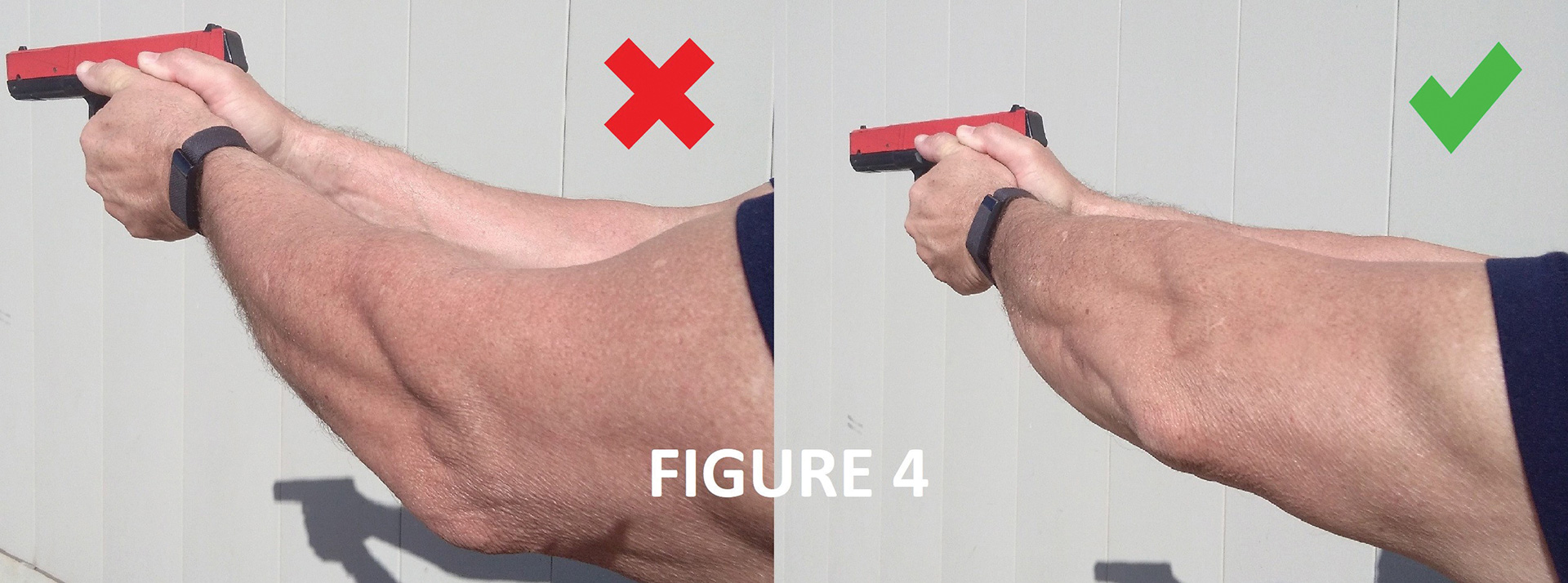
Now we are going to review the full upper body platform and the benefits it will bring to stabilize your shooting. If you notice, your specific positioning and bone structure are now going to assist in the overall recoil management of your weapon. With your wrists locked out in the true thumbs-forward grip, you should be able to trace a straight line from your thumb bone to your wrist, then to your ulna and radius bones (lower arm). Next, the straight line continues along your humerus bone (upper arm) and finally to your shoulder. The “line” does not have to be exactly parallel to the ground, but it should create a direct path for the kinetic energy to move straight to the rear, from the weapon to your body. This provides the opportunity for your body to absorb most of the energy, like a large shock absorber. Shock absorbers are made to minimize movement. So, in this case, your body and bone structure are minimizing weapon movement during recoil. This is a good thing (Figure 5).
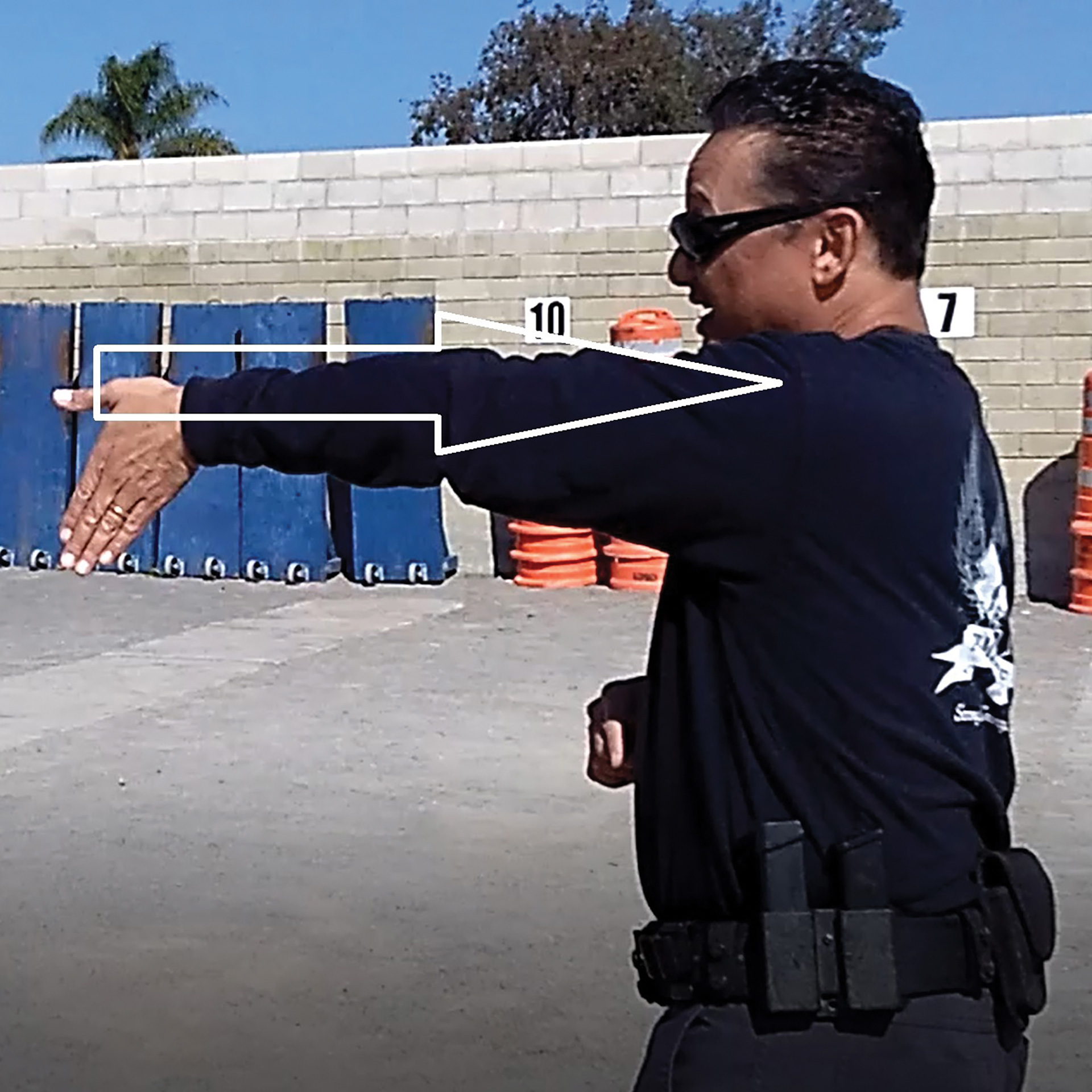
But if there is a “break” in the path, the energy will more than likely be redirected away from the core of your body, which again will contribute to misdirected movement of the weapon while firing. If we are only shooting one round at a time with no stress, then it really does not matter. We could all probably hit a nine-inch center mass target at seven yards standing on one foot in that scenario. But the real goal is stabilizing your shooting for follow-up or successive stress-fire rounds. That is when keeping weapon movement to a minimum is crucial.
Now, we are going to talk about isometric tension and then conduct a couple of tests on this newly constructed full upper body platform. Isometric tension is the contraction of muscles without the movement of joints. For the isometric tension test, you will need a partner to help. Once your partner is ready, get into your shooting platform with a cleared weapon or inert training pistol. Make sure you have the true thumbs-forward grip, your wrists locked out, your arms at full extension and your elbows pointed slightly outward. Now, as if you were going to fire the weapon, make your platform strong and stable.
Next, have your partner stand at your 11:00 or 1:00 position and grab the muzzle of your gun (Figure 6). For a couple of seconds, have them move the weapon up, down and side to side with about 20 to 25 pounds of pressure (like an extremely firm handshake). When your partner starts to move the gun, you will probably release some tension and the gun will move around a little. So, you will have to try it again. But this time, really stabilize your platform so it does not move.
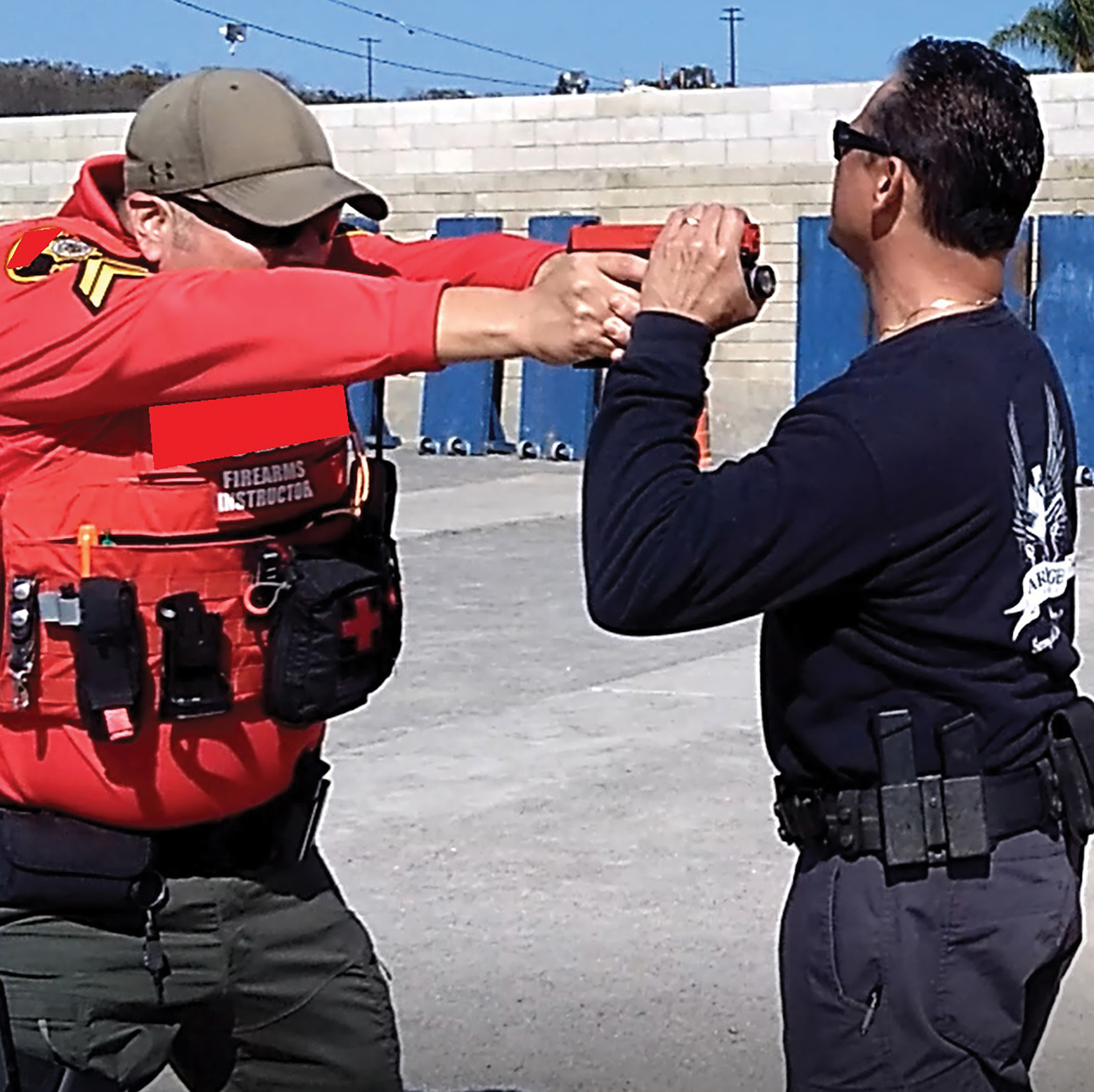
Take note of the amount of isometric tension you had to retain on the weapon to keep it steady. That is the same amount of pressure you will have to keep on the gun throughout the whole firing process. Another thing to notice is that the isometric tension is being provided by the muscles around both of your wrists. Did you observe how you were forced to lock them out when the gun started to move? There are other muscles at the upper end of your forearm that are contracting to provide isometric tension support as well. Once you feel that you have a stable platform, it is time to move to the final live fire test.
To start, draw a two-inch circle on the surface of any clean paper target. Then, from the three-yard line, aim for the circle and slowly fire five rounds, counting two seconds in between each shot. Now, move back to the five-yard line and do it again. Next, move back to the seven-yard line and do the same thing. After 15 rounds, if at least 10 of them are within the two-inch circle, you have an average/stable grip and upper body platform. If not, you will have to recheck your platform, restrengthen the tension on the gun and do the test again until you reach the goal. The other techniques discussed in my last article (true thumbs-forward grip and thumb pressure to the side of the frame) will also have to be implemented for success. Keep doing the test and rechecking your platform and tension until you are satisfied with your results.
If you have any questions, please get in touch. Otherwise, #staysafe and #stayready.
As seen in the January 2022 issue of American Police Beat magazine.
Don’t miss out on another issue today! Click below:

